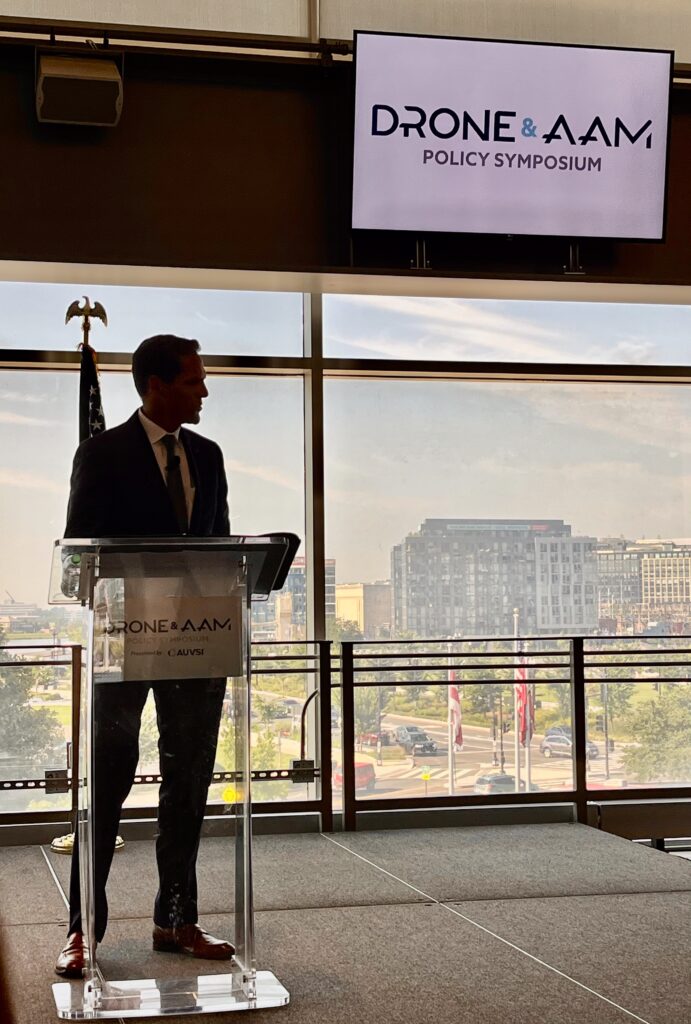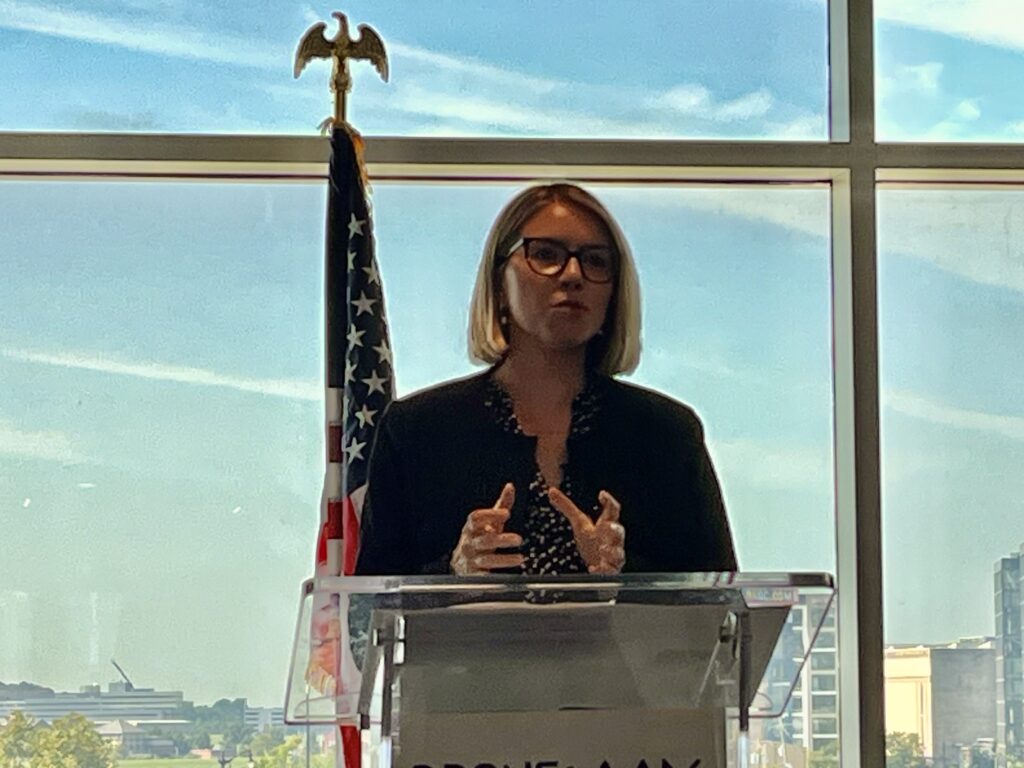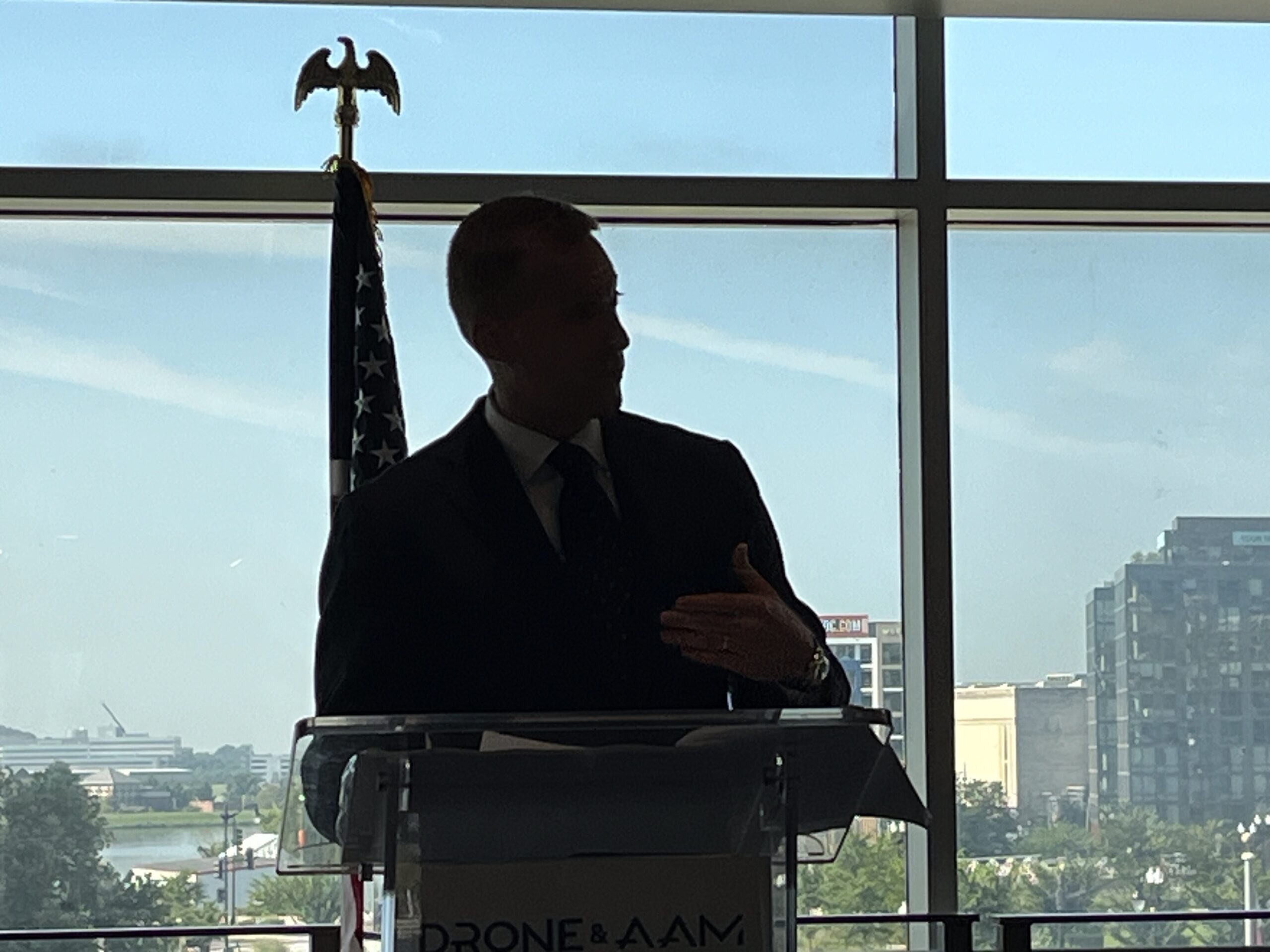As technology accelerates and expectations soar, the 2025 AUVSI Drone and Advanced Air Mobility (AAM) Policy Symposium convened this week against a backdrop of both optimism and exasperation. This year’s venue, Nationals Park in Washington, D.C., set an energetic tone for an industry that finds itself at a critical crossroads—caught between historic regulatory inertia and the surging momentum of innovation.
Deadlines Missed—and Exasperation in the Air
Michael Robbins, AUVSI President, opened the event with candor and a sense of shared frustration that resonated deeply with the audience. The symposium, he said, arrives at a moment of “profound transformation” for drones and advanced aviation—a moment, he lamented, that has been repeatedly delayed by bureaucratic gridlock.
“Promises have been made, promises had been broken. Deadlines have been set. Deadlines have been missed,” Robbins stated, expressing clear exasperation at the lack of progress on the all-important Beyond Visual Line of Sight (BVLOS) or Part 108 rule. “Despite intense congressional oversight, statutory deadlines in Congress, and an Executive Order (EO) from the President of the United States” to publish those rules, they have still has not passed, he continued.
Robbins cited the slipstream of regulatory deadlines: the FAA’s missed congressional mandate, now overdue by nearly a year, and an executive order deadline for draft rules that expired, he noted, “more than three weeks ago.” His frustration was palpable: “Kind of feels like a little bit of a Whiskey Tango Foxtrot (WTF) moment, doesn’t it?” (See prior AG coverage of the Trump AAM and drone EOs here and here)
Despite the cycle of deferred action, Robbins emphasized, to their credit, the FAA has leaned into waivers to move the industry forward. Yet, even that continues to take a tangible toll. “Waivers approved by the FAA grew 88% year over year…now more than 657 waivers, the highest number in program history. But that’s a lot of extra work for both industry and for the FAA. Whereas having a rule to adhere to reduces regulatory red tape and saves taxpayers and industry time and money,” Robbins explained.
Yet, Robbins’ message wasn’t one of complaint, however, It was a call for unity and advocacy amid adversity. “When the draft bill is finally, finally passed, which it will be soon…as an industry, we must remain united. We must be vocal and thoughtful in our comments, and we must be vigorous in our advocacy. Because don’t be fooled. Opponents…will be out to further delay or even kill this rule making,” he warned.
Unleashing Leadership: A Veteran’s Perspective on Aviation’s Next Frontier
If Robbins offered the urgency of the industry, Daniel (Dan) Edwards, Acting Assistant Secretary for Aviation and International Affairs at the U.S. Department of Transportation (DOT), provided the strategic vision shaped by decades in the cockpit, the boardroom and the Pentagon. Edwards, whose career reads as a study in the convergence of military discipline, industrial acumen and policy leadership, is a United States Air Force veteran with over 4,000 hours logged as a KC-10 pilot and civil engineer, who has led businesses in aerospace maintenance and supply and worked to safeguard commercial runways against emerging global threats.

Edwards’ forward-looking keynote was grounded in the lessons of aviation history as he set the stage for aviation’s current inflection point. “It was 1903 when the Wright brothers had the first powered flight down in Kitty Hawk, North Carolina, and it was just about 60 years later, 1962, when John Glenn orbited the planet. So more time has passed since we orbited the planet than passed between powered flight and orbiting,” he observed.
His message was clear: this is “a breakout opportunity, a breakout time,” and America must not let regulation or inertia cede leadership to other global competitors. “We don’t want drones or AAM (advanced air mobility) being held back by red tape…The longer we take to get new entrants into the airspace, more potential benefit and the investment in this country is lost. The opportunity cost associated with the lost time is a tax on this industry, and it’s one that we don’t want to pay,” he said.
Edwards highlighted recent executive actions designed to break the logjam, including Presidential EO’s, in his words, aimed at “jumpstarting domestic drone production, securing the airspace and ensuring global leadership.” He highlighted the DOT’s efforts to accelerate rule making, enable risk-based approvals and collaborate across government and industry so that “airspace modernization, infrastructure development, automation, secure operations and supply chains” become catalysts, not constraints, on innovation.
For Edwards, the vision extended beyond regulatory frameworks to the connective tissue of community and workforce. “We have workforce development efforts across the U.S. that are developing the next generation high tech, high value skills,” he noted, pointing to efforts such as: Archer Aviation’s new eVTOL factory in Georgia and Texas A&M University’s new Center for Advanced Aviation Technologies in Fort Worth combined with federal investments in air traffic modernization.
The Regulator’s Role: Partnership Over Roadblocks
Simone Pérez, FAA Assistant Administrator for Policy and Strategic Engagement, represented the regulator’s voice—optimistic about the twin tracks of safety and innovation, but careful to stress that progress is being made. While Pérez’s comments lacked the urgency of Robbins or the sweeping perspective of Edwards, her remarks confirmed the FAA’s commitment to integrating new technology and commercial entrants “without slowing down the innovation front.”
Pérez reprised the agency’s recent leadership changes, pointing to new Administrator Brian Bedford’s “35 years in the aviation industry” and “track record as a practitioner and innovator.” She highlighted the FAA’s progress on power lift certification, international regulatory harmonization and the drive toward performance-based, risk-calibrated rule making. “We are now nearly at the finish line…of the FAA’s proposed rule to make low altitude BVLOS drone operations safe, routine and scalable. This rule has been a top priority…It aligns with the president’s executive order to unleash American drone dominance, creating high skilled jobs, promoting innovation and stimulating the economy,” she said.

FAA efforts, Pérez emphasized, also include public-private partnerships in North Texas which have demonstrated large-scale drone integration, creation of a new Autonomy Working Group and support for state and academic collaborations. The agency, she stressed, “does not want to be a roadblock. We want to be your partner. Together, we can create a regulatory framework and an airspace that’s smarter, safer and ready for the future.”
A Community Unbowed: Unity Amid Uncertainty
Despite unkept promises of progress, deadline busts and regulatory inertia, the concurrent speeches crafted a story of resilience and determination. Robbins doubled down on the industry’s rapid progress. “This is an exciting time for all of us who are fortunate enough to work in this domain…We are seeing the emergence of new missions for drones, new aircraft approaching certification, new autonomy stacks and new communication networks enhancing airspace awareness and safety,” he noted.
Edwards and Pérez, for their parts, emphasized the government’s intention to partner with industry, invest in workforce and infrastructure and move policy at the “speed of relevance.” Both pointed to the rollout of new pilot programs like the eIPP (eVTOL Integration Pilot Program), demonstration projects such as the Dallas-Fort Worth Key Site and national strategies in draft including the National AAM Strategy to ensure the U.S. remains a leader—not a follower—in AAM and drone integration.
The Promise That Endures
As the symposium opener drew to a close, Robbins’ words captured both the spirit of exasperation and enduring resolve that defines the drone and AAM community today: “While, like you, I’m obviously a bit exasperated about the delay, I nonetheless remain very hopeful that we will get the draft bill out soon and we will get to a final to rule. We will prevail on this,” he emphasized.
As a perfect book-end to the two-day event that drew hundreds of industry professionals to our nation’s capitol, AUVSI announced, with great enthusiasm, that the publication of the Part 108 Notice of Public Rule Making (NPRM) was “imminent.” It had apparently left final review at the Office of Information and Regulatory Affairs, (OEIRA) and had made its final stop at “both the FAA and TSA (Transportation Security Administration.)
While promises may have already been made and broken, the promise of a united, resilient and forward-looking drone and AAM community has never been stronger.
Watch Michael Robbins and other AAM industry experts on AGN Live! from the Drone & AAM Symposium as they provide their first impressions from the event.

